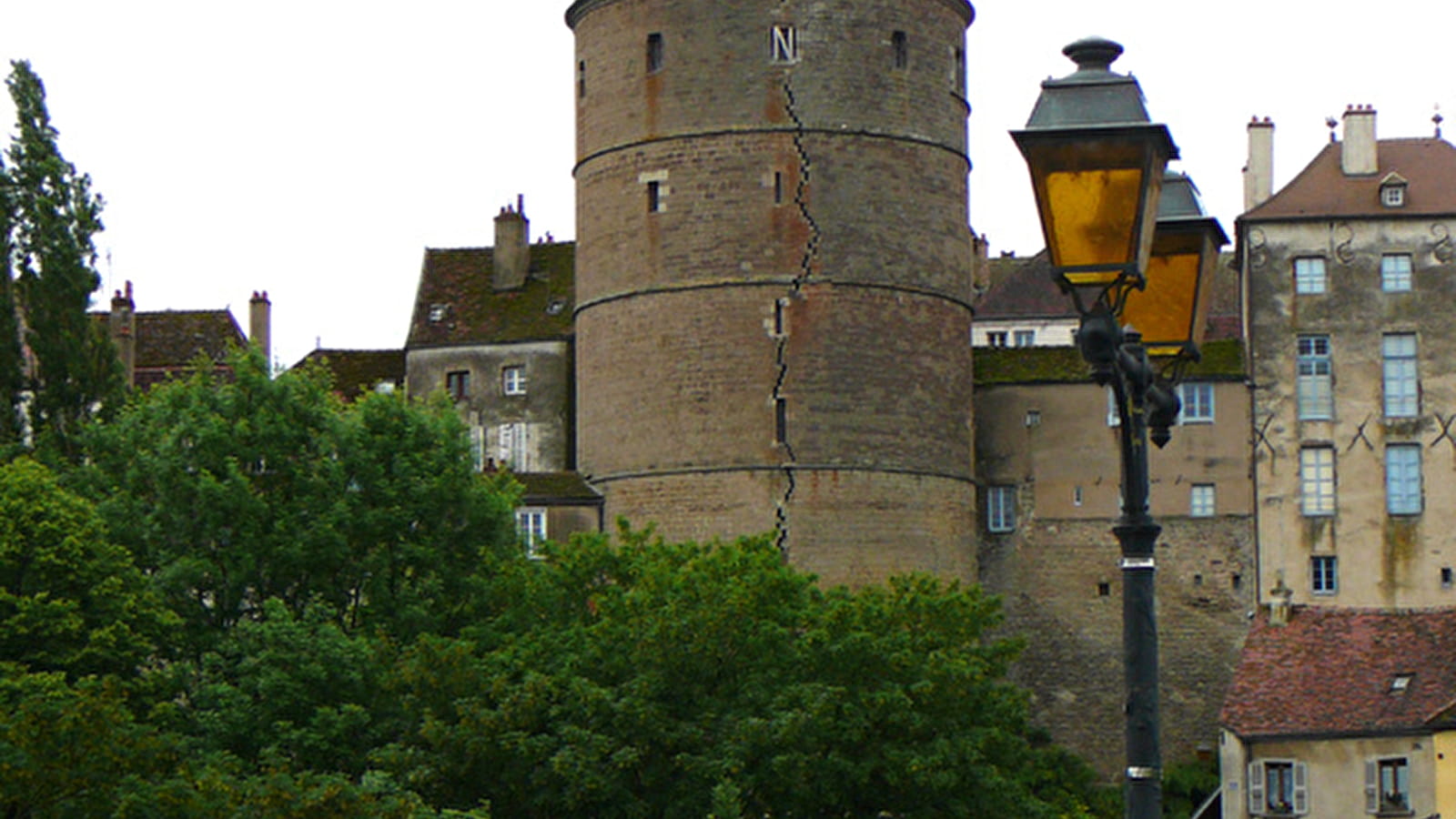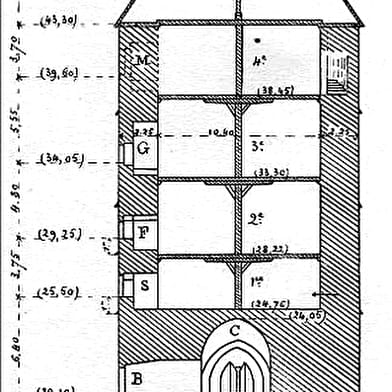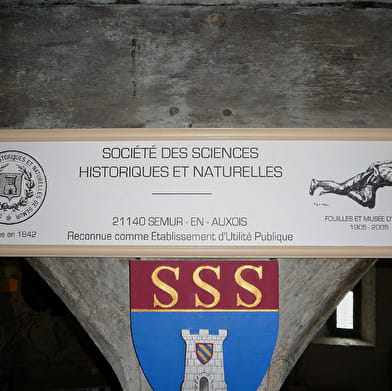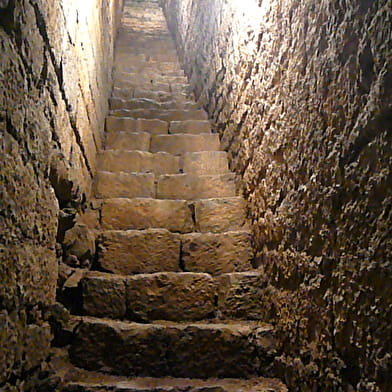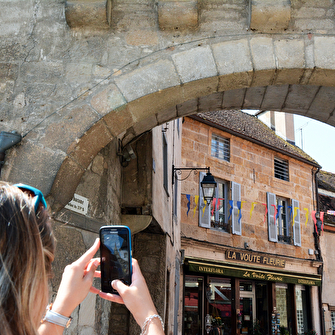VISIT TO THE TOWER
The visit to the Tour de l'Orle d'Or, during the summer and exceptional openings (groups are limited to 18 people), is enhanced by a presentation of the town of Semur in the Middle Ages. During the visit, a guide retraces the main episodes in the history of the town and provides keys to better appreciate and understand its heritage. The different levels of the tower offer unique views of the collegiate church, the ramparts and the Armançon valley, allowing you to fully appreciate the different elements of the urban landscape of the capital of the Auxois in the 15th century.
-------------------------------------
THE TOWER OF THE GOLDEN ORLE AND THE KEEP OF SEMUR
(Headquarters and archives of the Society of Historical and Natural Sciences of Semur-en-Auxois)
Built at the end of the 13th century, the keep of Semur is made up of a group of 4 massive towers, joined by high walls that have disappeared, the curtain walls, intended to close off access to the area located inside the meander of the Armançon.
A fortress belonging to the Dukes of Burgundy, the keep of Semur was, in the Middle Ages, an almost impregnable stronghold.
The main tower of the Semur keep, the Lourdeault tower (the Orle d'Or patronymic is more recent), is an essential element of the defence, control and representation of the ducal power in its flagship town of the Auxois bailiwick. With its imposing dimensions, almost 55 m high (44 of which are masonry) and 15 m in diameter, the Orle d'Or tower was the centrepiece of this fortified complex, due to its function as the town gate.
Indeed, before the construction of the Joly bridge in 1784, access to the upper fortified town (Notre Dame village) was through a narrow paved passageway, bordered by two pavements that are still visible on the lower level of the tower as an extension of the rue des Vaux. Carriages could then be easily controlled, first from the outside from a defensive level with large archways, then from above, thanks to a dominant floor (the 'Société des Sciences' has restored the estacade on which the sentries stood), a portcullis and strong iron-bound door leaves, before entering the town through another defended doorway in the lower part of the present Rue du Renaudot.
It should be noted that the large stone embankment added to the lower part of the tower is probably contemporary with the closing of the gate and the work following the construction of the Pont Joly bridge and the paved roadway (Rue du Pont Joly and Rue Voltaire).
This tower has a space divided into six large superimposed volumes, a remarkable example of medieval military architecture.
-------------------------------------
DATATION
The dendrochronological study of the floors and frameworks, launched in partnership by the 'Société des Sciences' and the town of Semur-en-Auxois, has made it possible to scientifically specify the date of construction of the Tower: it turns out that it was built in a few months in 1274.
The keep lost its defensive value when the walls joining the towers were demolished, as ordered by Henry IV, as can be seen from the date above the Tower's entrance door: 1606, which was a major cause of the appearance of the Tower's famous crack. The construction of the Pont Joly (1785) and the removal of the access to the city through the basement of the Tour de l'Orle d'Or will continue the de-skulling of the ramparts.
-------------------------------------
THE COLLECTIONS OF THE 'SOCIÉTÉ DES SCIENCES DE SEMUR-EN-AUXOIS
Owned by the town since 1904, the Orle d'Or tower is the headquarters of the 'Société des Sciences historiques et naturelles de Semur-en-Auxois'.
Its collections are spread over 4 levels of the tower's 6 superimposed volumes.
Exhibition room (1st level):
Showcases present the work of the 'Société des Sciences' since its creation in 1842, work in various fields: natural sciences (geology, herbarium, entomology boxes), palaeontology, archaeology, ethnology (lighting through the centuries, local weaving in the 19th century); numerous photographs of the excavations at Alesia that the 'Société des Sciences' conducted for a century from 1904. Two showcases evoke the medieval fortifications of Semur.
The 2nd and 3rd levels present the technological collection on the one hand and the library and archives of the 'Société des Sciences' on the other:
- Two curious objects should not be missed: the cycle built in Semur in 1868, and the solar oven of the Semur precursor Mouchot.
- In addition to the printed books, the length of which side by side would exceed 600 metres, manuscripts and original documents make up the richness of the 'Société des Sciences' collection.
The fourth floor, once a "conference room", has retained its "1900" appearance and offers a panoramic view of the city. Old projection equipment shows that the 'Société des Sciences' has always favoured the use of images.
Unfortunately, the basement (1st volume), where the old city entrance is located, and the first floor (6th volume) are not accessible to the public. However, a boom restored by the 'Société des Sciences' allows visitors to stand above the old access road to the town of Semur.
The reception room for visitors at street level was created in the building belonging to the 'Société des Sciences', known as the 'Conciergerie'.
